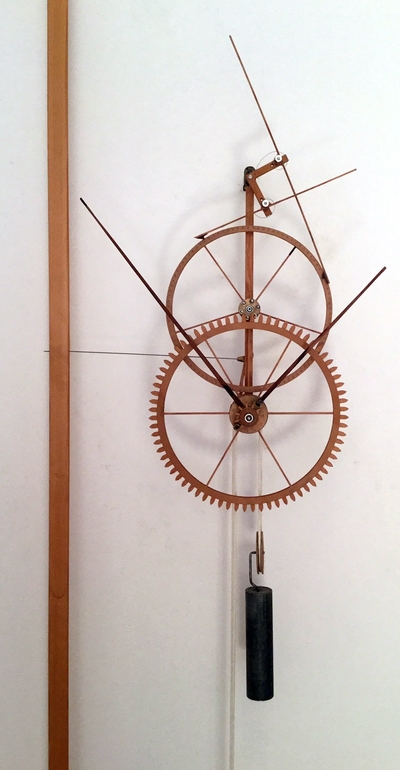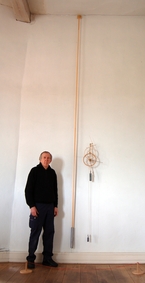
Grasshopper escapement
Pallets positioned by spiral springs, just visible.
Escape wheel
5 spokes, 1 rev. in 5 mins.
100 pins, 0.6mm ∅
Escape wheel rim
5mm cross-grain balsa
sandwiched between
two layers of 1 mm ply.
Pinion
six 3mm ∅ pins each
with a 4 mm brass sleeve.
Sleeves are free to rotate.
Hour-wheel with 72 teeth
each 5 x 5 x 17 mm,
sanded to involute curve.
and sandwiched between
two layers of 1 mm ply.
Hubs
12 x 1 mm brass tube
two 10mm ball-bearings
on 5 mm steel axles.
Hour hand is turned by a daisy wheel.
Pendulum
varnished spruce.
Pendulum weight:
steel tube, 35cm long
4.5cm outside diam.
